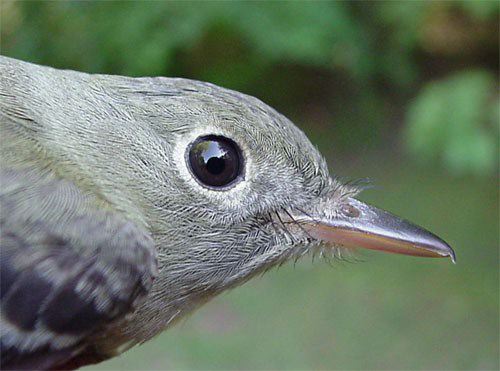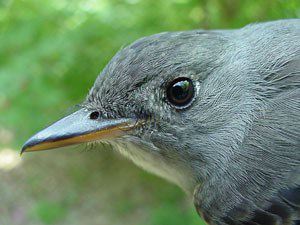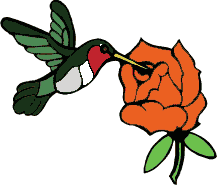|
|
|||
|
THIS WEEK at HILTON POND |
|
Empidonax flycatchers are the bane of beginning birders and even some experienced field ornithologists. These small greenish-gray birds with eye-rings and wing bars are very similar in appearance and--where their ranges overlap--can best be positively identified by song or a series of intricate in-the-hand measurements. Although all five eastern U.S. species of Empidonax migrate through the South Carolina Piedmont, only four have been netted at Hilton Pond Center over the past 20 years, and three of those have turned up quite rarely.  The Alder Flycatcher, E. alnorum, has never been sighted at the Center--not surprising since its normal migration path takes it closer to the mountains a hundred or so miles to our west. Of the remaining species, the diminutive Least Flycatcher, E. minimus--with four individuals banded locally, hasn't actually been the "least" common; that honor goes to Yellow-bellied Flycatcher, E. flaviventris--of which we've netted just two. There have also been three Willow Flycatchers, E. traillii, but by far the most common Empidonax is the Acadian Flycatcher, E. virescens. As of this week we've banded 95 of them (see photos above and just below). These banding totals may be a little misleading until we mention that Acadian Flycatchers are also the only Empidonax species that breeds locally; all the rest simply pass through in spring or fall.
We're secretly grateful for this, for in mid-summer when we lead field trips at Hilton Pond Center we can feel secure in saying that the Empidonax flycatcher perching on yon branch is an Acadian. This would, in fact, be our guarded pronouncement almost everywhere south of the Mason-Dixon Line; the Acadian is truly a southern flycatcher, while the others are more northerly in distribution. (Caveat #1: Acadian Flycatchers breed rarely as far north as extreme southern Canada. Caveat #2: Willow, Alder, and Least Flycatchers nest at higher elevations in the Appalachians in Virginia and North Carolina and across Tennessee, and Willows are apparently extending their breeding range into the North Carolina Piedmont around Raleigh.) Acadian Flycatchers are actually mis-named; they don't occur in Nova Scotia--also known as "Acadia"--but their look-alike Empidonax relatives do. (Empidonax is a misnomer, too, since it comes from the Greek words for "mosquito" and "king." Empidonax flycatchers certainly catch many kinds of flies, but mosquitos are too small for them to harvest. More often they eat beetles and moths and a wide variety of other flying insects, plus spiders, millipedes, and even berries.) A flycatcher's predatory habit is no doubt aided by a distinctive notch near the tip of its bill (top photo). An Acadian Flycatcher pair--males and females look alike--selects a forked tree branch in which to build their nest, a rickety hanging structure that often is so thin on bottom that the eggs can be seen from the ground. The nest typically is in moist woodlands--including bottomland swamps and cypress bays--and less than 20 feet above the substrate. One other "southern" flycatcher that might confuse a casual observer in summer is the Eastern Wood-Pewee. After listening to bird tapes and making careful field observations on the breeding grounds, it becomes fairly easy to differentiate the che-bunk of the Yellow-bellied Flycatcher from the che-bek of the Least. Or you can visit Hilton Pond Center in mid-summer and feel completely confident that any Empidonax you see is an Acadian Flycatcher--even if you don't hear its explosive peet-suh!
If you enjoy "This Week at Hilton Pond," please help Support Hilton Pond Center for Piedmont Natural History. It's painless, and YOU can make a difference! You may wish to consult our Index of all nature topics covered since February 2000. |
||


 This bird is not an Empidonax flycatcher--Contopus virens is its scientific epithet--but it IS gray to grayish-green with pale wing bars and thus resembles its Empidonax cousins. The thing to look for in pewees is the LACK of an eye-ring (right photo) or to listen for its plaintive pee-oo-wee, pee-oo.
This bird is not an Empidonax flycatcher--Contopus virens is its scientific epithet--but it IS gray to grayish-green with pale wing bars and thus resembles its Empidonax cousins. The thing to look for in pewees is the LACK of an eye-ring (right photo) or to listen for its plaintive pee-oo-wee, pee-oo.

